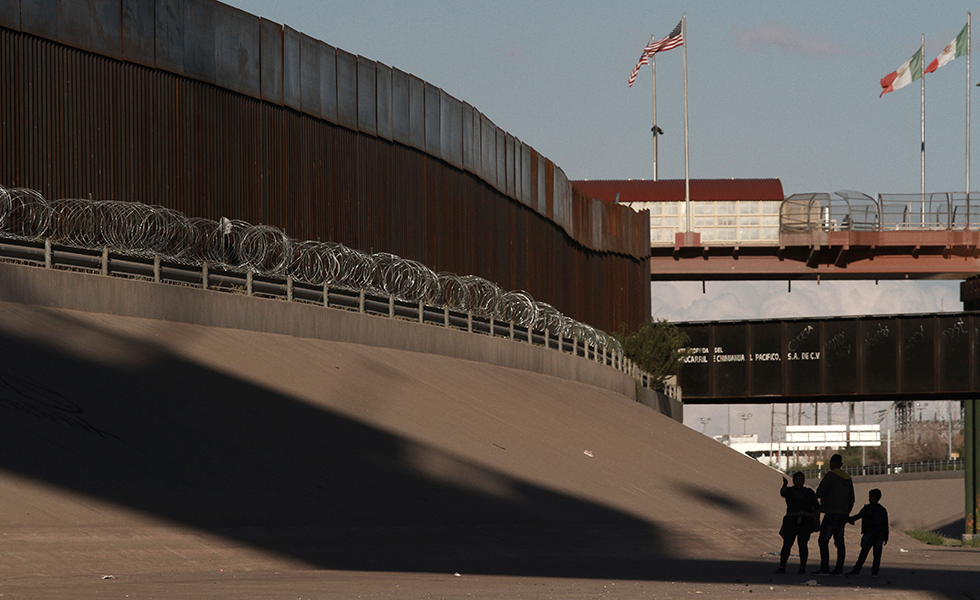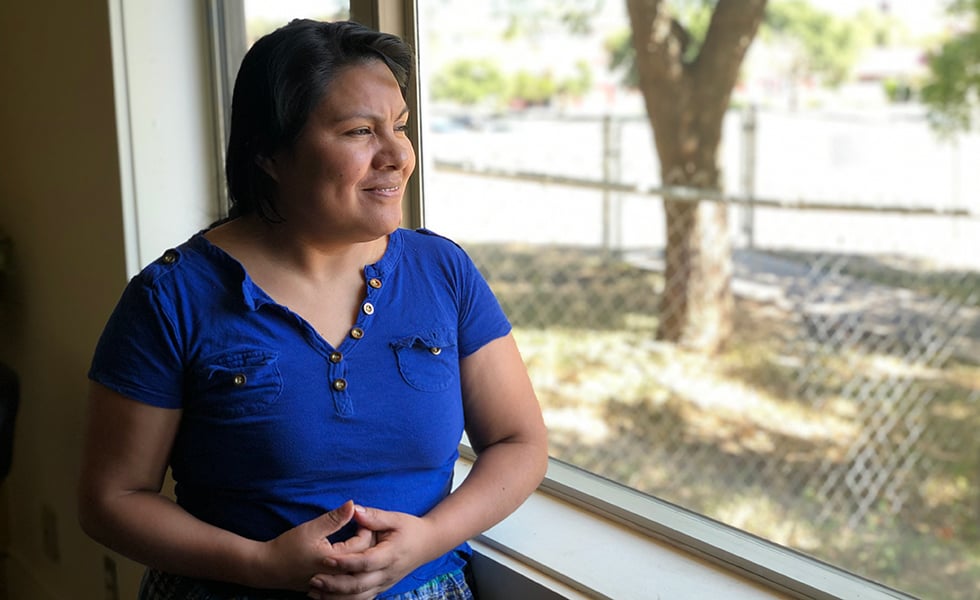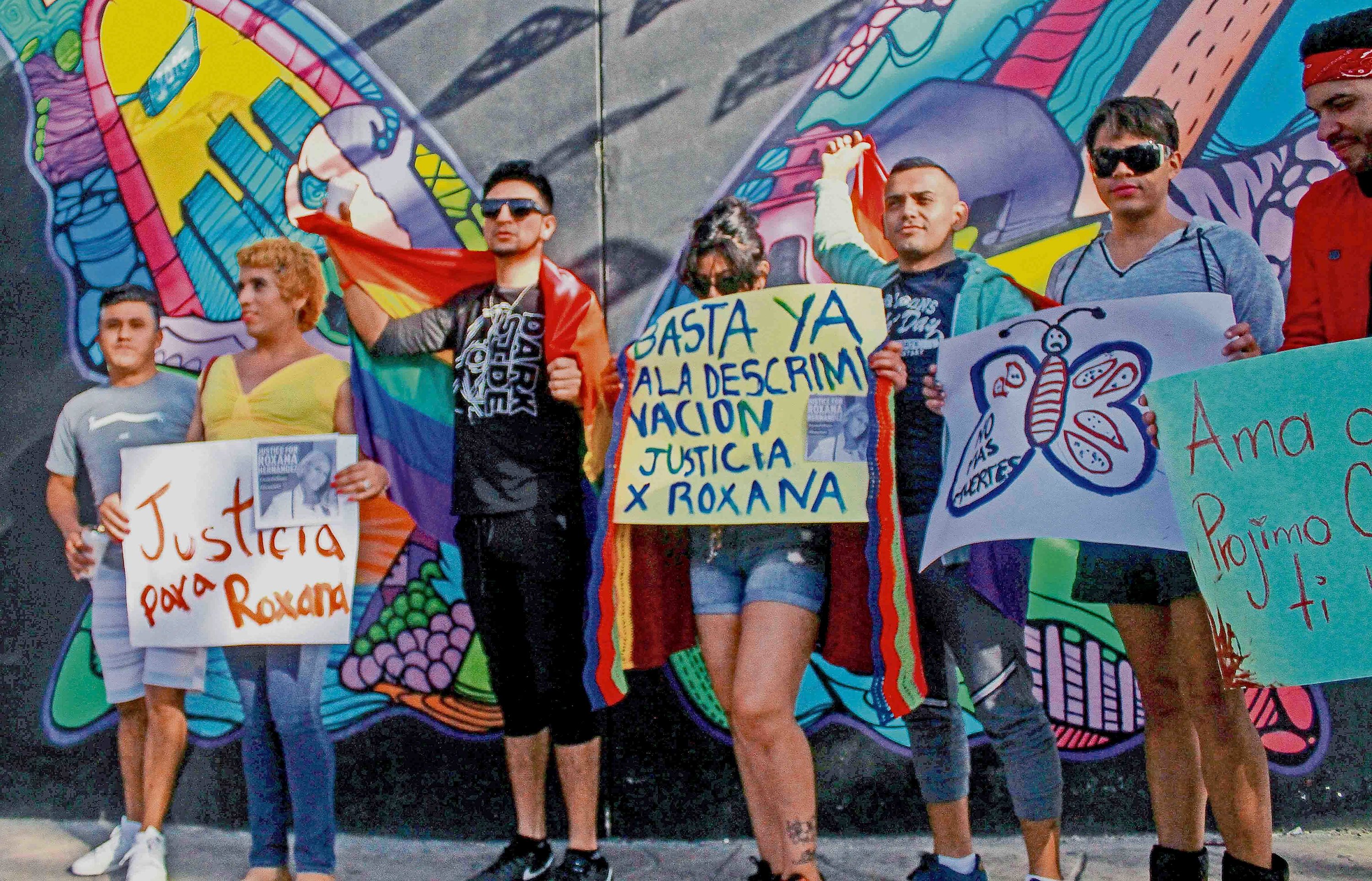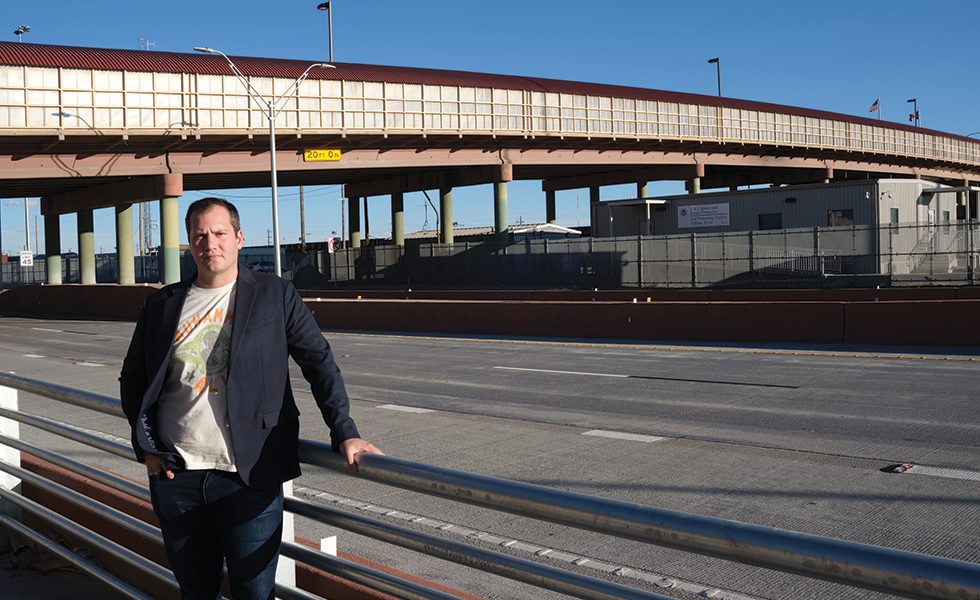
Researcher Jeremy Slack on the Horrors that Await Immigrants Deported from the U.S.
Slack led a massive research effort to learn what happens to those whom immigration authorities deport and dump all along the Mexican border.
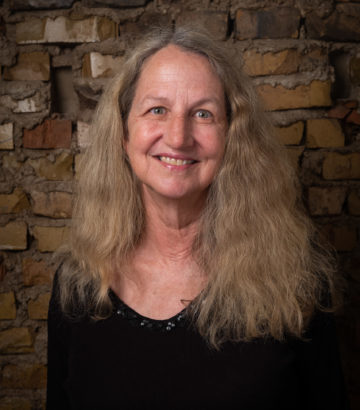
A version of this story ran in the January / February 2020 issue.
Above: Jeremy Slack, photographed on the Cesar E. Chavez Border Highway in El Paso, recently led a research team that interviewed more than 1,100 people to learn what happens to deportees in Mexico.
As an 18-year-old freshman at the University of Arizona, Jeremy Slack began crossing the border into Mexico not to down shots of tequila, but to interview the displaced. Tall, blond, and at first speaking only high school Spanish, the Virginia transplant and aspiring ethnographer stood out mightily as he began interviews in soup kitchens and shelters—first in dusty Arizona border towns and later in cities along the Texas border, like Ciudad Juárez and Nuevo Laredo.
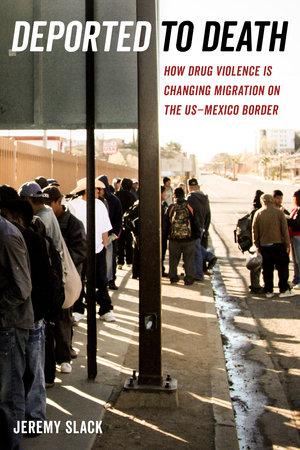
By Jeremy Slack
University of California Press
$29.95; 280 pages
Buy the book here.
Slack found the borderlands both “fascinating” and “severely misunderstood.” As he continued his research in graduate school in Tucson, he sometimes served meals or cleaned in Mexico’s many shelters for displaced migrants, learning to fit in as a self-described “out-of-place gringo” who specialized in hot spots hard hit by cartel turf wars. He hung out with cocaine addicts on a highway overpass in Tijuana, trailed homeless deportees wandering plazas in Tamaulipas, and befriended a badly scarred man who provided horrific details of how he’d been tortured in a cartel’s rural conditioning camp.
Now an assistant professor of geography at the University of Texas at El Paso, Slack recently led a massive effort: 60 researchers who interviewed more than 1,100 people to learn what happens to those whom U.S. authorities deport and dump all along the Mexican border. He’s helped document how many are literally Deported to Death, the title of his 2019 book from the University of California Press.
Texas Observer: Your book is the culmination of years of interviews with deportees, starting in Nogales. How did this obsession take hold?
Slack: As graduate students, we would leave Tucson at 5 p.m., cross the border, and get back at 2 a.m., if we were lucky. We had no money, but we did about 420 interviews in almost 150 trips. Then we wrote some grants to take this project to the whole border. This is the time that everything got really violent, and people who were crossing the border had a real front-row seat. I became focused on: How has this big drug conflict really influenced people who are migrating, as well as people who are being deported?
You repeatedly visited extremely dangerous spots like Nuevo Laredo during the era of Miguel Treviño Morales, known as “40,” the Zetas cartel leader. How did you pull that off?
It was really complicated. When we first got there, in 2011, [prominent journalist] Marisol Macías had been murdered, and horrific things were going on that were creating this chilling effect. We ended up tagging along with a group of Tijuana researchers from Colegio de la Frontera Norte who’d been doing a 30-year project. And we began working directly at the border, right when people walked off the bus [after being deported]. That was the safest and easiest place.
The first time I went to the shelter for migrants in Nuevo Laredo, you’d be knocking on the front door and a bunch of guys with guns would come out to look at you from across the street. There was a sense of being watched. At that time, shelter workers were under threat. But having made that contact, I kept in touch. I ended up sort of moving in [years later]. It was a good way to blend into the institutional background.
I always tell people I’m doing research. But often if you spend time in shelters that give people food, people just sort of put you in that category of a gringo do-gooder, probably religious. Especially as an ethnographer, any time you’re working at an institution, it’s important to be a resource. You’re participating in the daily work, and it gives you kind of a bond and an insight, and there are important conversations you overhear that provide some of the nuances of how it feels to be a migrant in a time of intense conflict.
Your research emphasizes the importance of Mexican shelters. Some are being pushed beyond their limits, and volunteers have been kidnapped or killed. How has this network changed?
There was a low amount of crossing when Trump came into office, and then it shot up. That’s whiplash to the NGO and service provider landscape. A lot of people reduced staff, and now a ton of people are coming. And most shelters were set up for short-term stays: three nights or a week, max. What’s happening is that two U.S. programs are causing people to get stuck at the border, metering and Remain in Mexico. This is something that the shelters are not equipped to deal with. You can’t come and go from these shelters. It’s not an apartment, it’s not a hotel. You can’t have a regular life or go out to get milk or diapers. They’re not usually set up for families.
You describe how deportees have been targeted for American accents, tattoos, or just being from a Mexican state controlled by a rival gang. But two men taken away from a shelter by a Zetas crew may have been targeted for “simple missteps.” You learned that on their way to the shelter, they ignored questions from boys who were working for the cartel as lookouts. What happened to them?
I did get their names, but I’ve never been able to find out anything else. There isn’t good public information or even private information about what happens to people, because asking those questions is really dangerous. The other situation I face as a researcher is, if I go too deep, is it going to cause problems for the shelter?
There is one [shelter employee] who seems to have possibly been killed there that I worked with. He got in the way of an abduction, and no one has heard from him since.
What’s changed with new leadership in the U.S. and Mexico and the arrests of cartel kingpins?
We haven’t seen wholesale attacks, as occurred in border towns like Allende and Ciudad Alemán, cases of drug cartels razing entire towns. Those attacks did contribute to a military crackdown. But what’s left of that cartel is still really dangerous and strong.
As I explain in the book, a higher level of violence can occur to immigrants without that kind of blowback. Unfortunately, the likelihood of getting into trouble for crimes is very low. In the largest incident, 380 people were kidnapped in Matamoros. What I heard is, this was publicly reported only because one kidnapping group was pointing a finger at another kidnapping group because they took their migrants.
The abductions you describe have been linked to a larger pattern of massacres, like the 72 Central American migrants executed in San Fernando in 2011 [in Tamaulipas, south of the Texas border]. Recently, Mexican journalists reported that nearly 2,000 clandestine mass gravesites have been uncovered across Mexico in the past decade. Did that figure surprise you?
No. I think there’s probably even more—especially in northern Mexico, like the recent discovery of 52 bodies outside Rocky Point [in Sonora, south of the Arizona border]. I think Mexico is going to spend the next 20 years randomly finding clandestine graves with dozens of bodies in them. Up until now, the capacity of the state to identify remains has been very low.
My push has always been how we connect that to migration. That’s a harder question to answer. Because not only do you have to look at who’s reported missing in Mexico, you’re going to be looking for missing Central Americans and for people who were deported from the U.S.
We hear a lot about Central American families at the border, but many Mexicans seem to be fleeing internal violence and applying for asylum too. What’s happening?
The size of the flows of people from Central America has dwarfed conversations about Mexican asylum-seekers and migrants, but we have had a sharp increase. The U.S. government used to not include Mexicans in their policy of “metering,” but over the summer they started making them wait. About 1,000 people, half of them children, with winter coming on, are camping in Juárez.
And instead of having a few hot spots like Ciudad Juárez, we now see the conflict going to a lot of new places and flaring up in ways we would not expect. As of September, 2,000 Mexicans had signed up. They’re camped in all of these cities.
This interview has been edited for length and clarity.
READ MORE:
-
A Solitary Condition: Texas has banished hundreds of prisoners to more than a decade of solitary confinement, an extreme form of a controversial punishment likened to torture. Many of these prisoners aren’t sure how—or, in some cases, if—they will ever get out.
-
In Texas, Thousands of Kids Lose Medicaid Coverage Each Month: Texas has the most uninsured kids in the nation. But state lawmakers have made it especially difficult for kids to stay on Medicaid.
-
ICE Quietly Lowers (Already Low) Standards at Some Immigrant Detention Facilities: The changes—which affect 18 facilities in Texas—include giving guards more leeway to put migrants in solitary confinement, as well as no longer requiring outdoor recreation areas.
